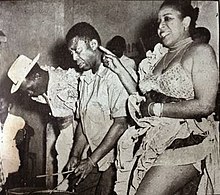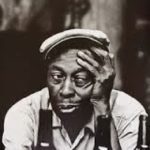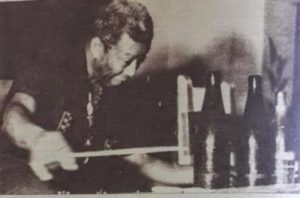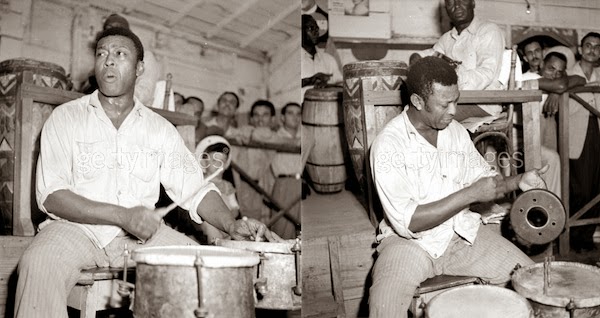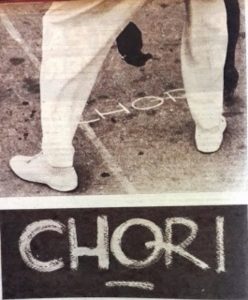 SILVANO SHUEG “EL CHORI” … UN EXCENTRICO MUSICO OLVIDADO.
SILVANO SHUEG “EL CHORI” … UN EXCENTRICO MUSICO OLVIDADO.
Cualquiera que haya vivido en La Habana en los años cincuentas, debio haber visto un nombre escrito con tiza blanca y letra muy pareja en paredes, portales, aceras, calles y los más curiosos e insospechados lugares de la gran urbe cubana. El nombre de “Chori” aparecía por todas partes. Su nombre era Silvano Shueg Hechevarria quien confesaba haber nacido el 6 de enero de 1900, «envuelto en un pellejito, en la calle Trinidad, entre Reloj y Calvario», decia para proclamar enseguida con orgullo: «Soy de Santiago de Cuba».
En 1927 está ya en La Habana y se emplea como músico en Marte y Belona, la academia de baile de Monte y Amistad.
El Chori era un artista que se anunciaba solo. Un genio de la autopromoción. Un excéntrico, se dice con frecuencia, capaz de sacar música de un timbal, una botella o un sartén y montar así un show escalofriante. Segun los establecimientos artisticos de algun renombre no aceptaron las dotes artisticas de el Chori, “un showman a quien más valía tener por payaso que encomiar sus dotes musicales, encerrado en un bar marginal y sin perspectivas de dar el gran salto que le valdría ser reconocido no como un “excéntrico musical” —título con un tufo demasiado evidente a subestimación—, sino como el gran percusionista que fue desde el empirismo más visceral” segun investigadores historicos cubanos.
Cuando llega 1959, una élite de suficiencia tampoco acepta al Chori. No lo toman en serio. Más bien se avergüenzan de una figura como la suya y de entornos como la Playa de Marianao. Al gran rey del timbal, “lo privaron del reconocimiento que merecía, no desde una perspectiva de atracción turística, sino desde la constatación de su genialidad como músico y figura singular del espectáculo” según la investigadora Rosa Marquetti. En una guía turística de La Habana que, en 1956, se publicó en Estados Unidos con el sugestivo título de ‘Para después de la oscuridad’, se dice que profesores de danza norteamericanos visitaban la Playa de Marianao para enterarse de cómo se bailaban en verdad los ritmos cubanos. Por sus precarios escenarios pasaron figuras como Benny Moré, Antonio Arcaño, Arsenio Rodríguez, Juana Bacallao, Senén Suárez, Carlos Embale, Tata Güines y decenas de artistas no tan conocidos hoy como Evelio Rodríguez, «el trovador espirituano», «la sevillanita» Obdulia Breijo, la vedette Tula Montenegro, dueña de una anatomía descomunal, y el olvidado travesti Musmé.
Con el Chori como portaestandarte, escribe Rosa Marquetti en ‘Desmemoriados; Historias de la música cubana’, la Playa de Marianao fue, hasta la década de 1960, una de las zonas más endemoniadamente turística de La Habana. En el verano de 1963, el Instituto Nacional de la Industria Turística (INIT) emprende una labor de saneamiento de la Playa y clausura El Niche y La taberna de Pedro, escenarios por excelencia del Chori. Con sus timbales, sus botellas y demás cacharros, Silvano Shueg Hechavarría tiene que irse literalmente con la música a otra parte.
Escribía entonces Orlando Quiroga en su columna de la revista Bohemia: «Aunque luzca paradójico, el Chori, nuestro más grande timbalero, el que Brando, la Baker, Spencer Tracy y Martine Carol calificaron de “genius” y fueron a ver hasta su cueva en La taberna de Pedro, no se está presentando en La Habana de noche…». El hombre que se había negado a viajar a Hollywood de la mano de Marlon Brando, y que rechazó la ayuda que le ofrecía Miguelito Valdés para dar el salto desde el cabaretucho a los predios del cabaré Sans Souci, se veía obligado ahora a abandonar la Playa. O más bien, la Playa abandonó al Chori a su suerte. Y sin el Chori la grisura se apoderó irremisiblemente de la Playa de Marianao, que nunca volverá a ser la misma con su olor a fritanga y aguardiente, afirma Rosa Marquetti, quien menciona a algunas de las figuras que contribuyeron a engrandecer la leyenda del Chori: Ava Gardner, Toña La Negra, Gary Cooper, Lucho Gatica, Imperio Argentina, Tennesse Williams. Apareció en dos películas, filmadas ambas en La Habana: Un extraño en la escalera (1954) con Arturo de Córdova y Silvia Pinal, en la que el timbalero interactúa con la actriz, y La pandilla del soborno, con Errol Flynn, Rossana Rory y Pedro Armendáriz, con apariciones de Guillermo Álvarez Guedes, Aurorita Pita, Velia Martínez y Carlos Mas. Hasta donde se sabe es el autor de Hallaca de maíz y Se acabó la choricera…
Llega así el año de 1974. Nadie repara en el asunto, pero con el pasar de los días empieza a sentirse la ausencia de Silvano en el patio del solar de la calle Egido, 723. El olor a muerto va invadiendo el espacio. Rompen la puerta del cuartucho que ocupaba el Chori y allí está en efecto, más azul y tieso que nunca. Ahora sí que se acabó la choricera..
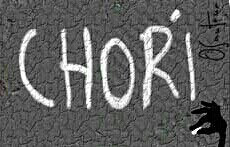 SILVANO SHUEG “EL CHORI” … AN ECCENTRIC MUSICIAN FORGOTTEN.
SILVANO SHUEG “EL CHORI” … AN ECCENTRIC MUSICIAN FORGOTTEN.
Anyone who lived in Havana in the fifties should have seen a name written in white chalk and very similar letters on walls, portals, sidewalks, streets and the most curious and unsuspected places of the great Cuban city. The name “Chori” appeared everywhere. His name was Silvano Shueg Hechevarria who confessed to being born on January 6, 1900, “wrapped in a pellejito, in the street Trinidad, between Clock and Calvary,” he said to proclaim proudly: “I’m from Santiago de Cuba.”
In 1927 he is already in Havana and is employed as a musician on Mars and Belona, the dance academy of Monte y Amistad.
Chori was an artist who announced himself. A genius of self-promotion. An eccentric, it is often said, capable of taking music from a kettledrum, a bottle or a pan and thus mount a chilling show. According to the artistic establishments of some renown, they did not accept the artistic gifts of Chori, “a showman who was more worthy to be a clown than to praise his musical skills, locked in a marginal bar and without prospects of taking the great leap that would be worth to be recognized. not as a “musical eccentric” -title with a tufo too obvious to underestimation-, but as the great percussionist who was from the most visceral empiricism “according to Cuban historical researchers.
When 1959 arrives, a sufficiency elite does not accept Chori either. They do not take it seriously. Rather they are ashamed of a figure like theirs and of environments such as Marianao Beach. The great king of the timbal, “deprived him of the recognition he deserved, not from a tourist attraction perspective, but from the verification of his genius as a musician and singular figure of the show” according to the researcher Rosa Marquetti. In a tourist guide of Havana that, in 1956, was published in the United States with the suggestive title of ‘For after the darkness’, it is said that American dance teachers visited Marianao Beach to find out how they really danced the Cuban rhythms. Due to its precarious stages, Benny Moré, Antonio Arcaño, Arsenio Rodríguez, Juana Bacallao, Senén Suarez, Carlos Embale, Tata Güines and dozens of artists not as well known today as Evelio Rodríguez, “the Spiritist troubadour”, “La Sevillanita” Obdulia Breijo, the vedette Tula Montenegro, owner of a huge anatomy, and the forgotten transvestite Musmé.
With Chori as standard bearer, Rosa Marquetti writes in ‘Desmemoriados; Stories of Cuban music ‘, Marianao Beach was, until the 1960s, one of the most devilishly touristy areas of Havana. In the summer of 1963, the National Institute of the Tourist Industry (INIT) undertook a task of sanitation of the beach and closed El Niche and La taberna de Pedro, scenarios par excellence of the Chori. With his kettledrums, his bottles and other pots, Silvano Shueg Hechavarría has to literally go with the music elsewhere.
He wrote then Orlando Quiroga in his column of the magazine Bohemia: “Although look paradoxical, the Chori, our greatest timbalero, which Brando, Baker, Spencer Tracy, and Martine Carol described as” genius “and went to see his cave in Pedro’s tavern is not showing up in Havana at night … ». The man who had refused to travel to Hollywood at the hands of Marlon Brando, and who refused the help offered by Miguelito Valdés to make the leap from the cabaret to the premises of the cabaret Sans Souci, was now forced to leave the beach . Or rather, the beach abandoned Chori to its fate. And without the Chori the grayness seized irremissibly of Marianao Beach, which will never be the same with its smell of fritanga and brandy, says Rosa Marquetti, who mentions some of the figures that contributed to magnify the legend of Chori: Ava Gardner, Toña La Negra, Gary Cooper, Lucho Gatica, Argentine Empire, Tennessee Williams. He appeared in two films, both filmed in Havana: A Stranger on the Stairway (1954) with Arturo de Cordova and Silvia Pinal, in which the timbalero interacts with the actress, and The Bribe Gang, with Errol Flynn, Rossana Rory and Pedro Armendáriz, with appearances by Guillermo Álvarez Guedes, Aurorita Pita, Velia Martínez and Carlos Mas. As far as is known is the author of Corn Hallaca and the choricera is over …
This is the year of 1974. Nobody notices the matter, but with the passing of the days the absence of Silvano begins to be felt in the patio of the street on Egido Street, 723. The smell of the dead invades the space. They break the door of the small room that occupied the Chori and there it is in effect, more blue and stiff than ever. Now the choricera is over ..
Agencies/ Ciro Bianchi/ Extractos/ Excerpts/ Internet Photos/ Arnoldo Varona/ www.TheCubanHistory.com
THE CUBAN HISTORY, HOLLYWOOD.



 < SILVANO Shueg "EL CHORI".. an Eccentric Musician Forgotten. PHOTOS.
< SILVANO Shueg "EL CHORI".. an Eccentric Musician Forgotten. PHOTOS.
